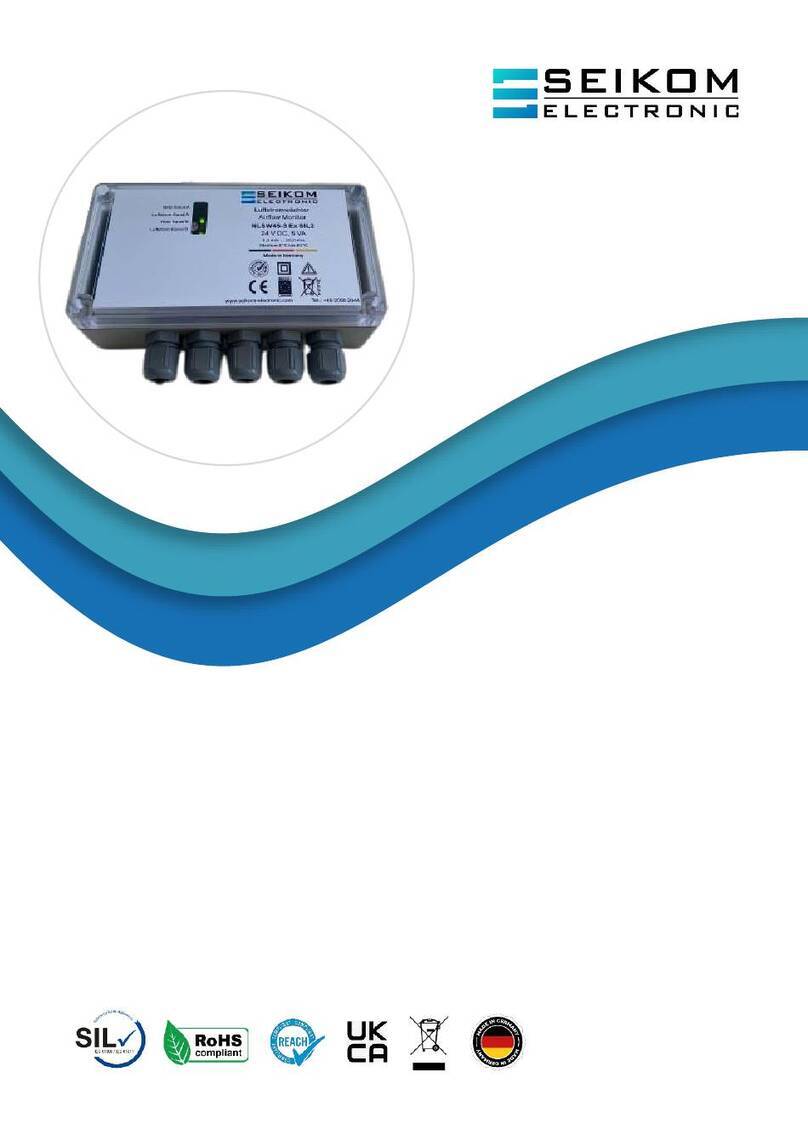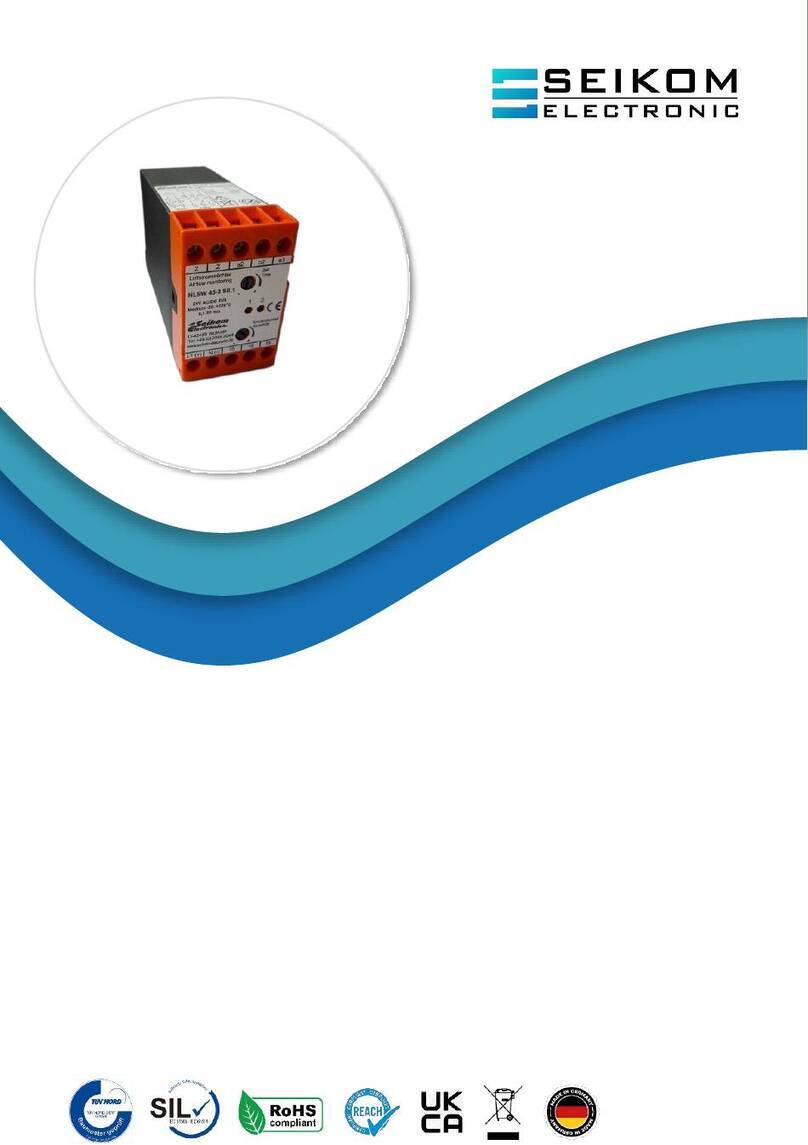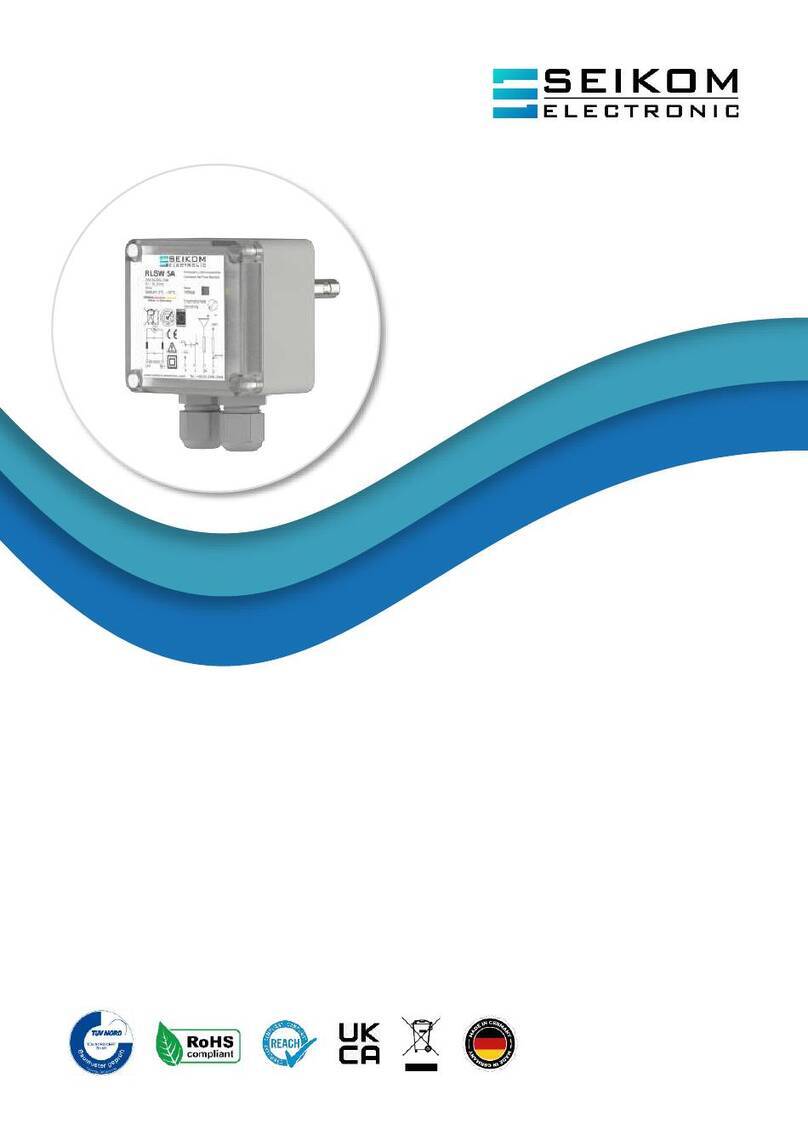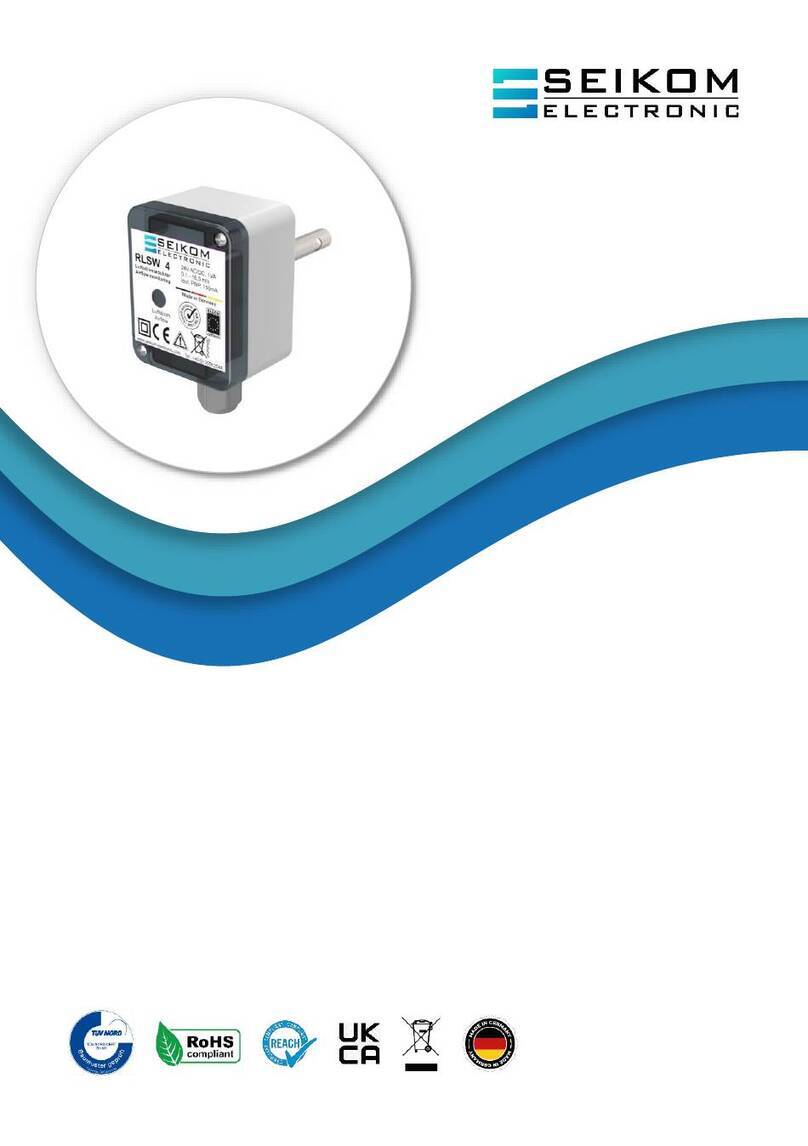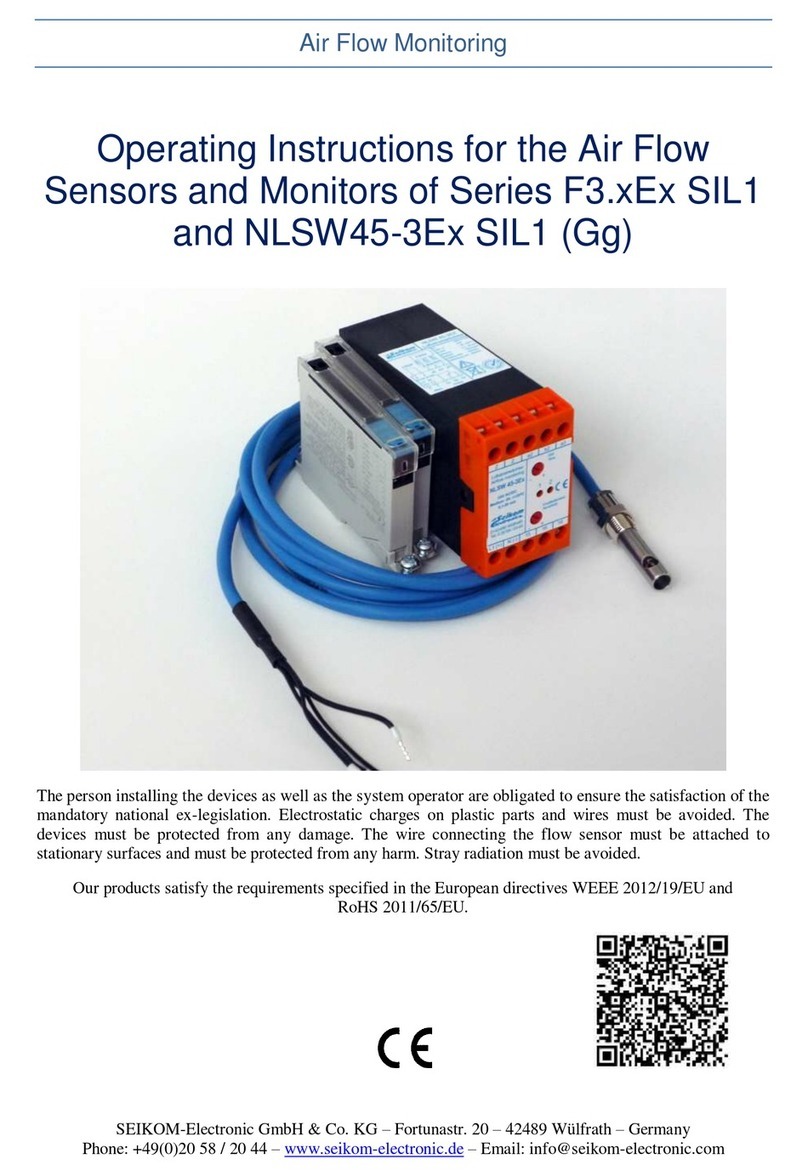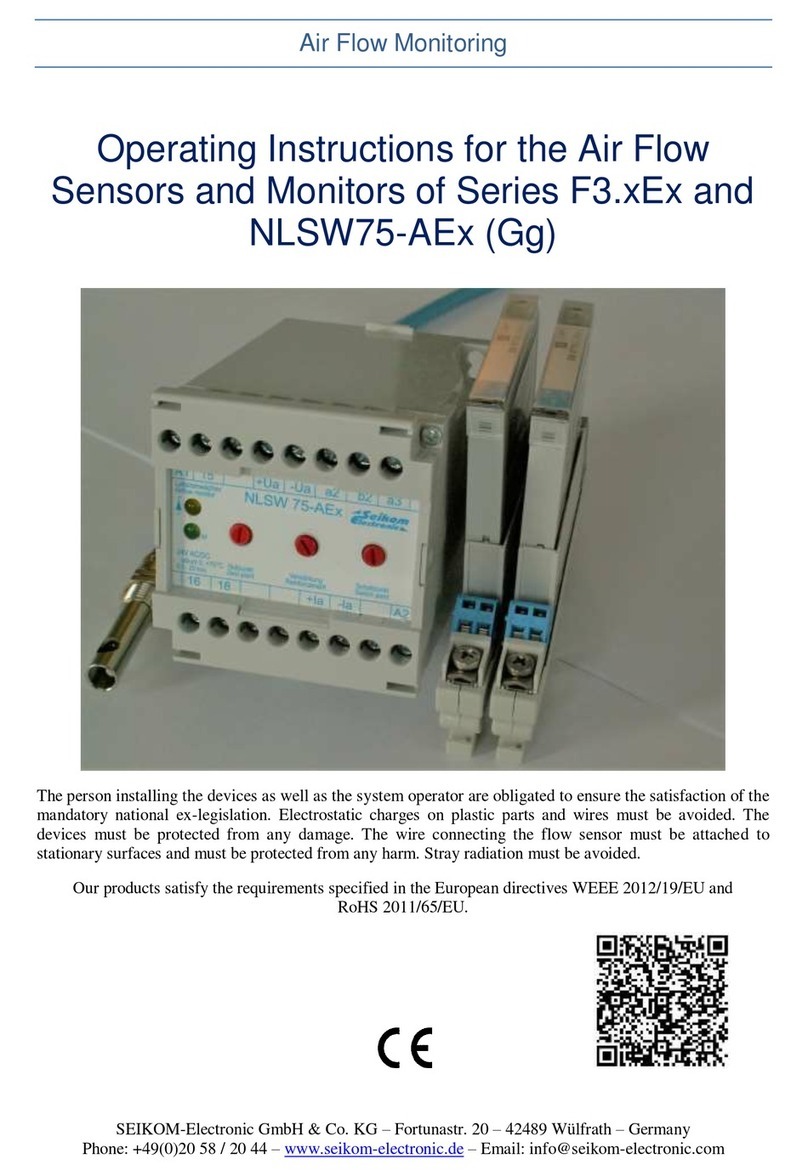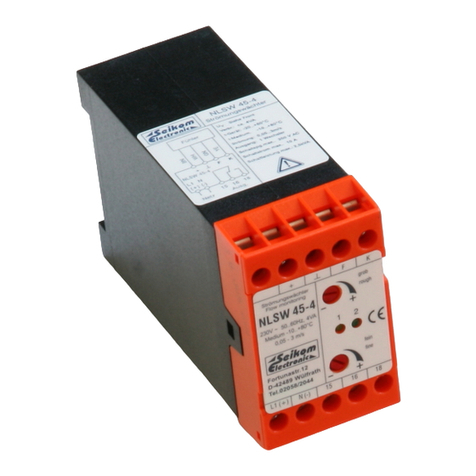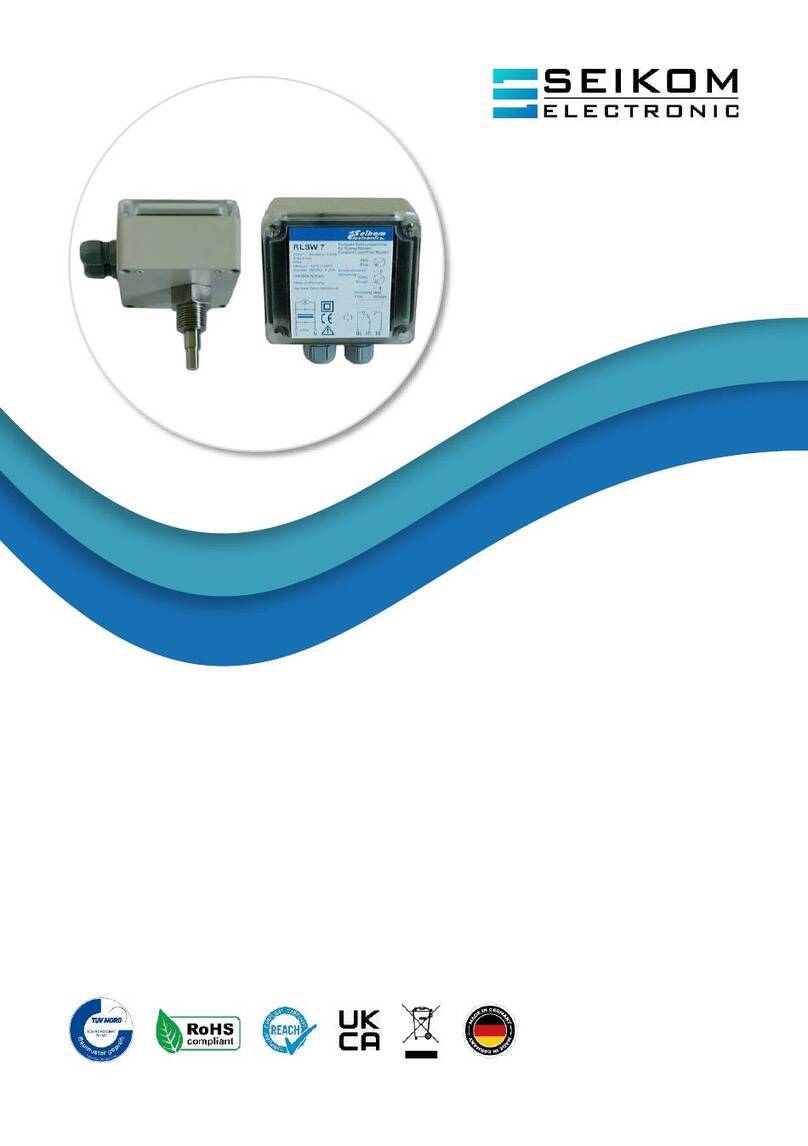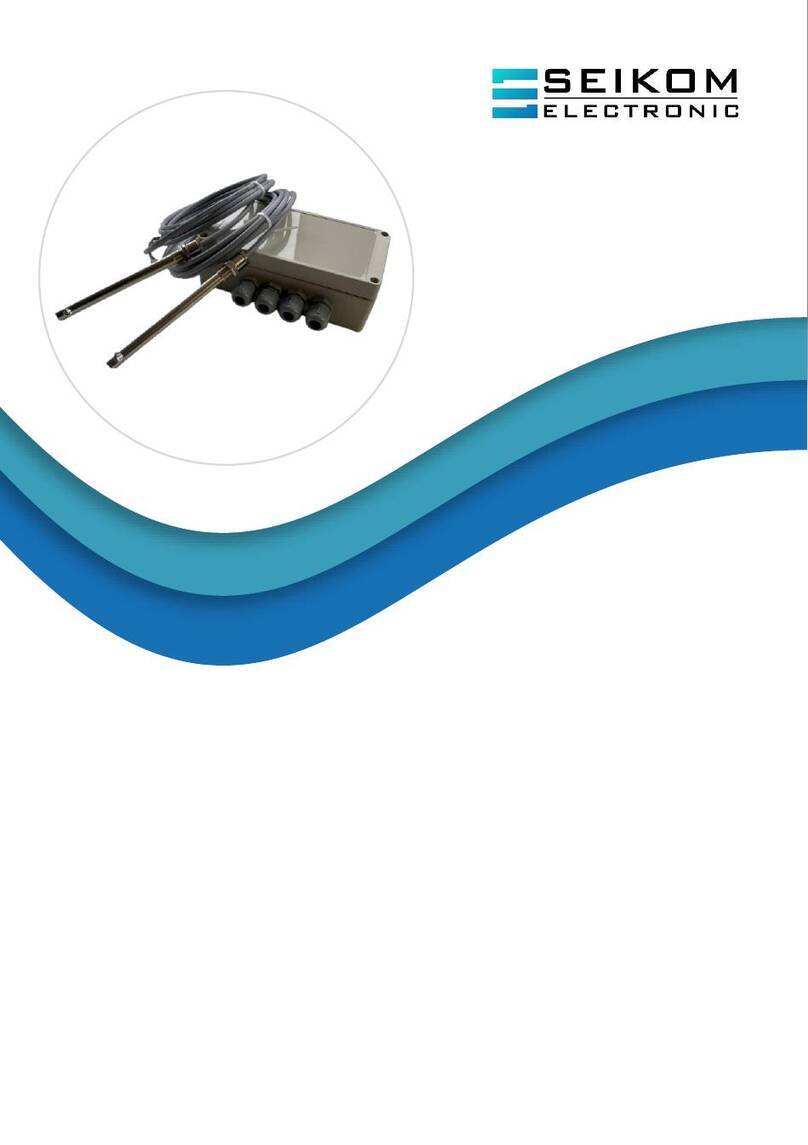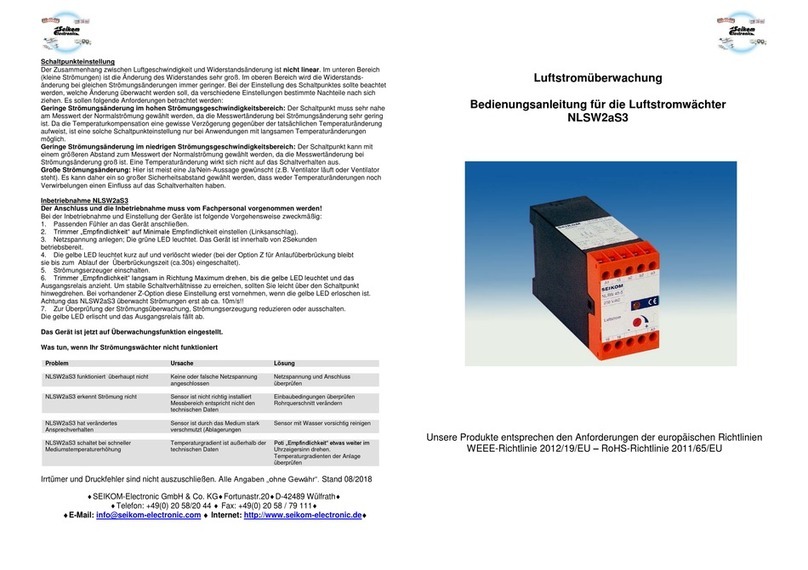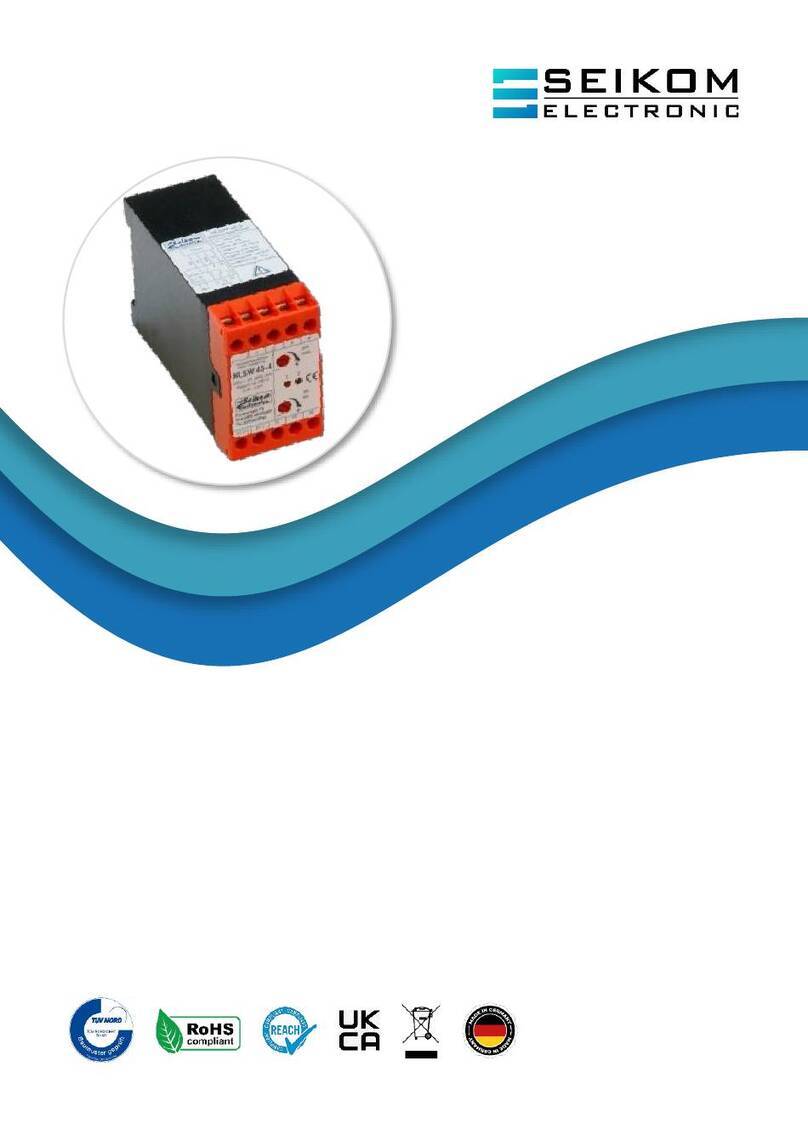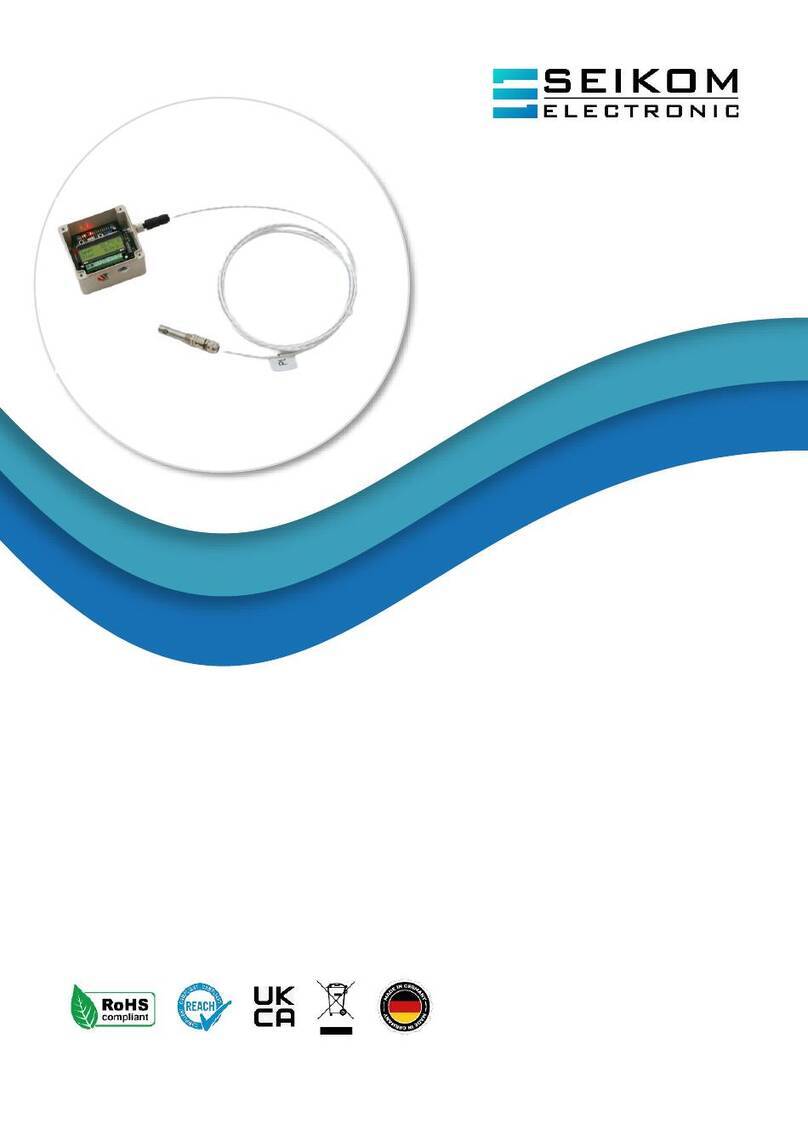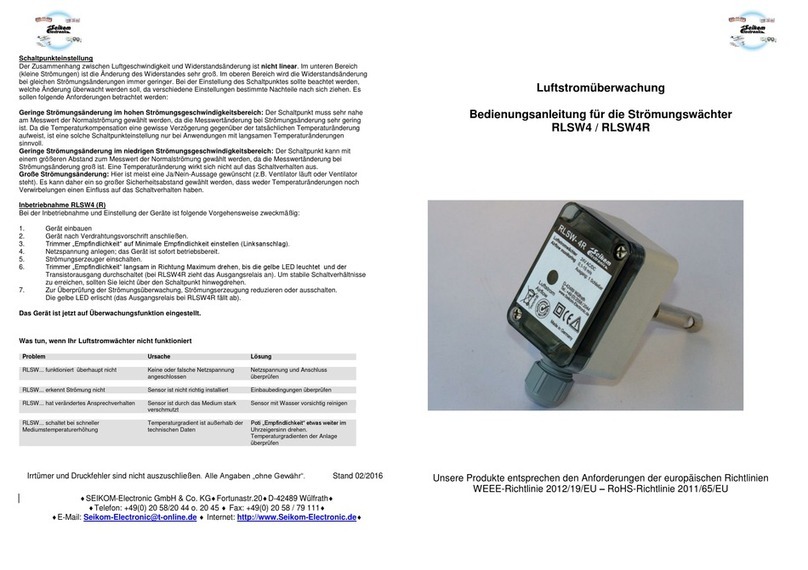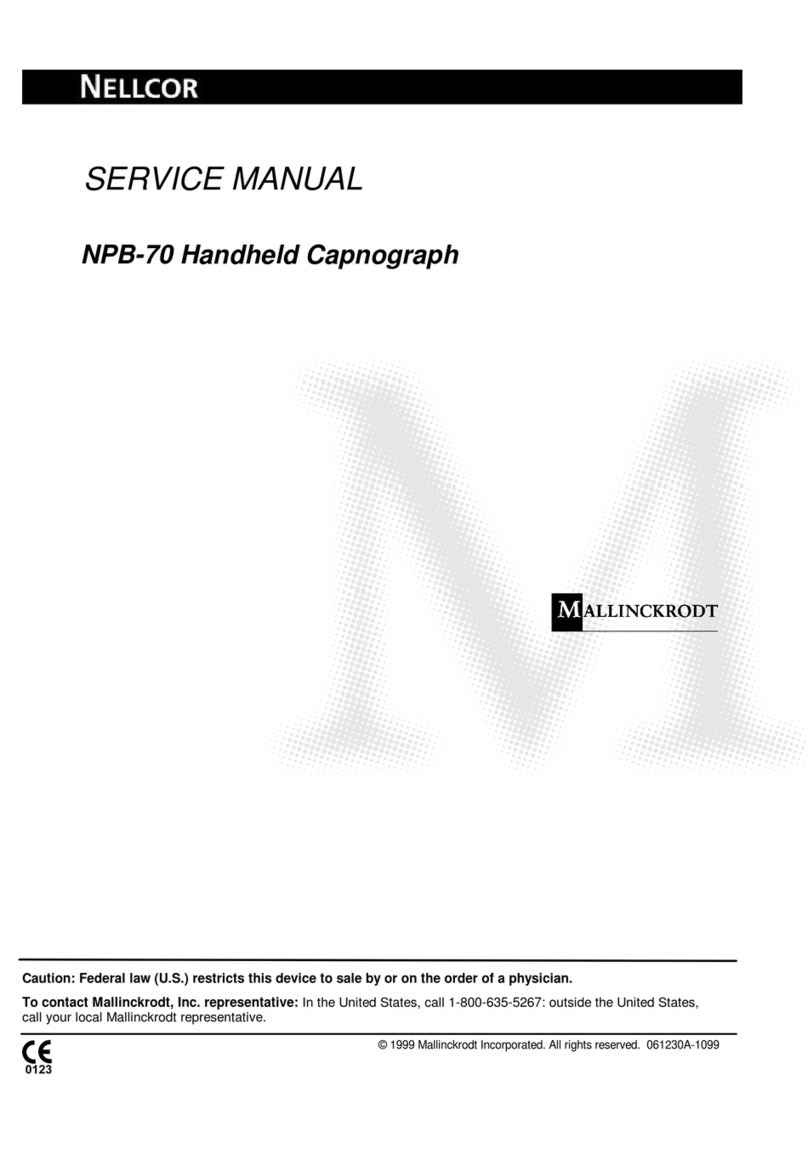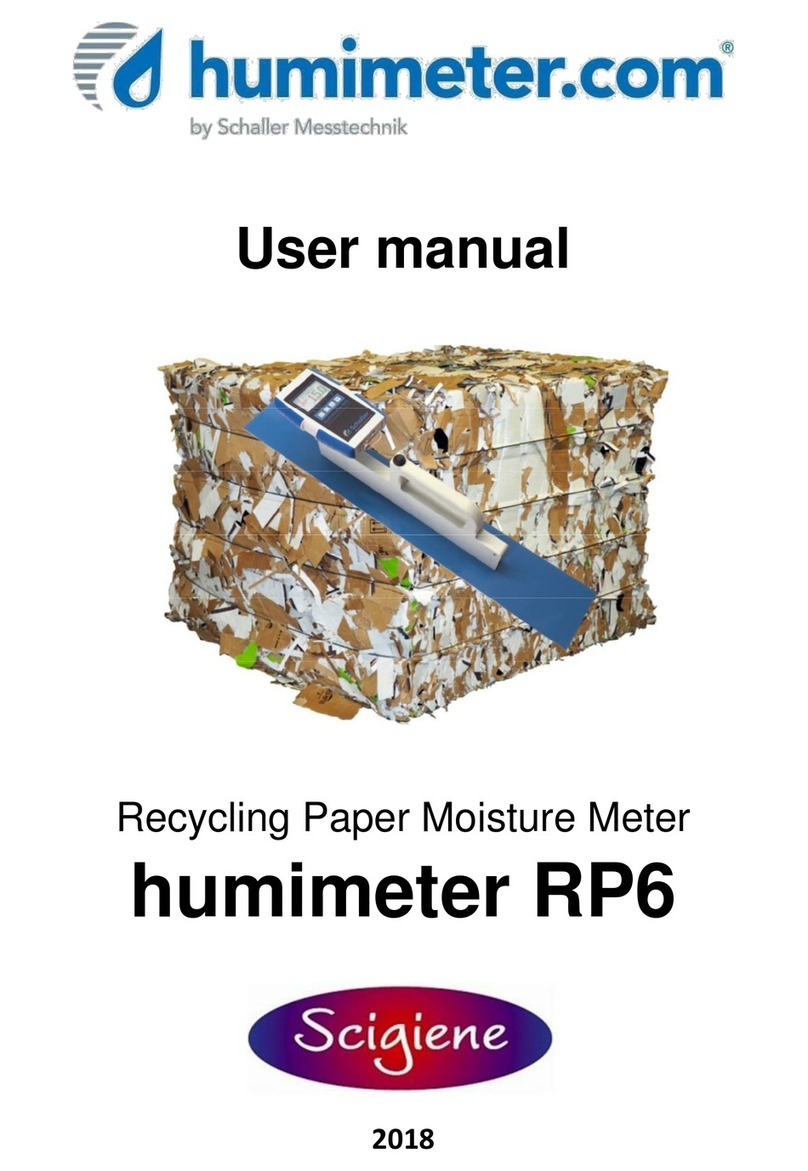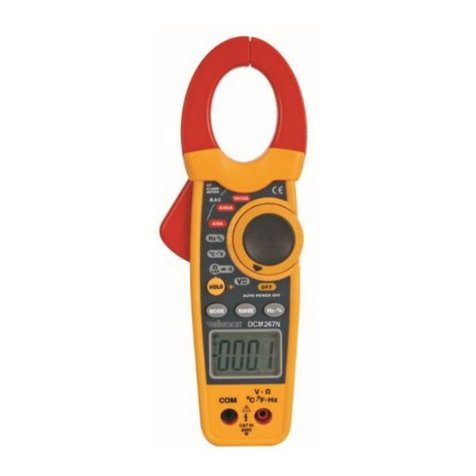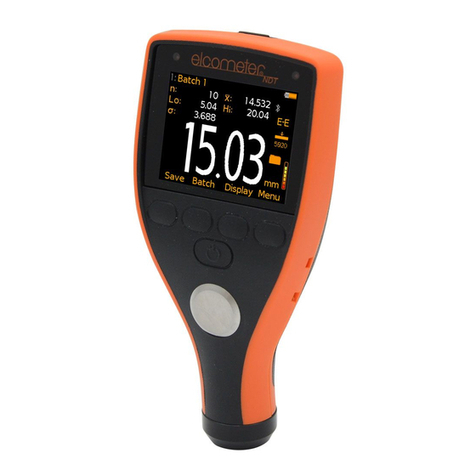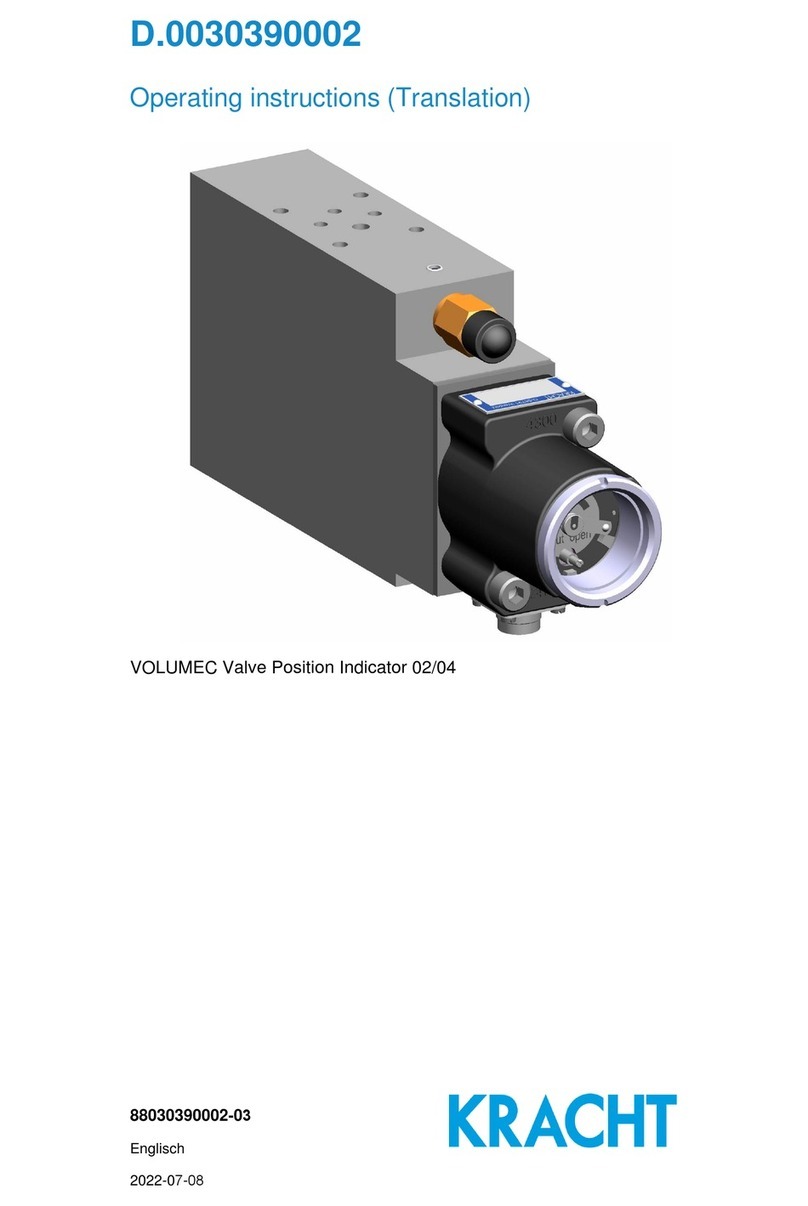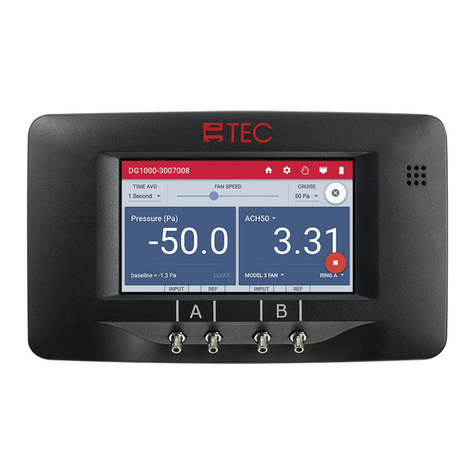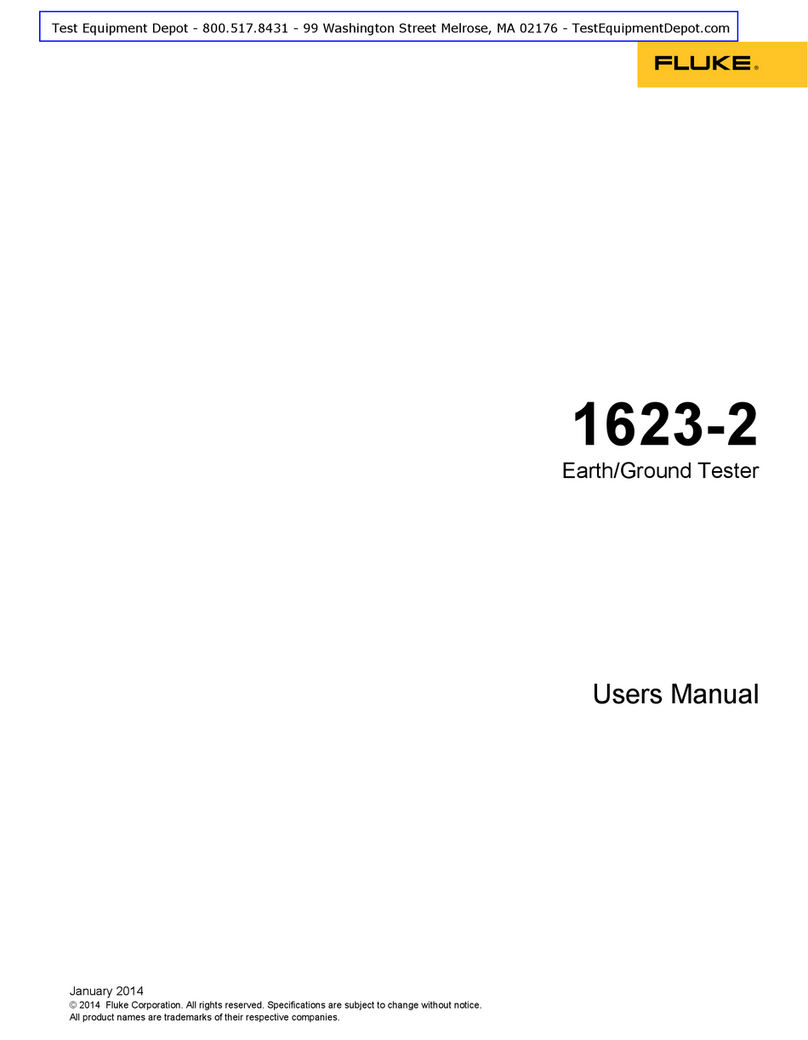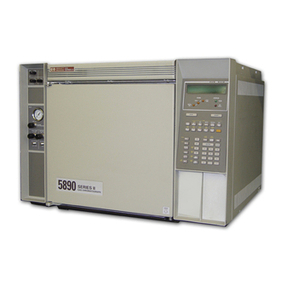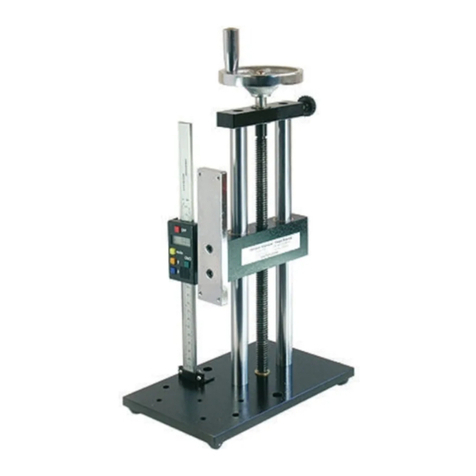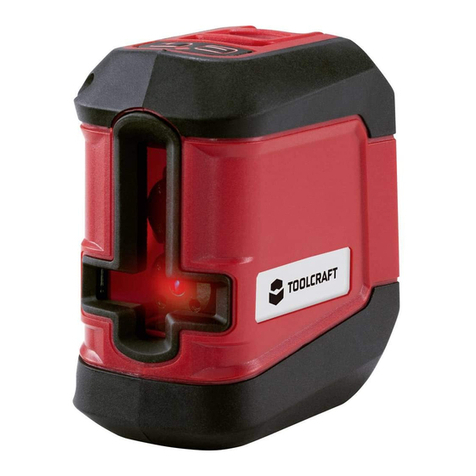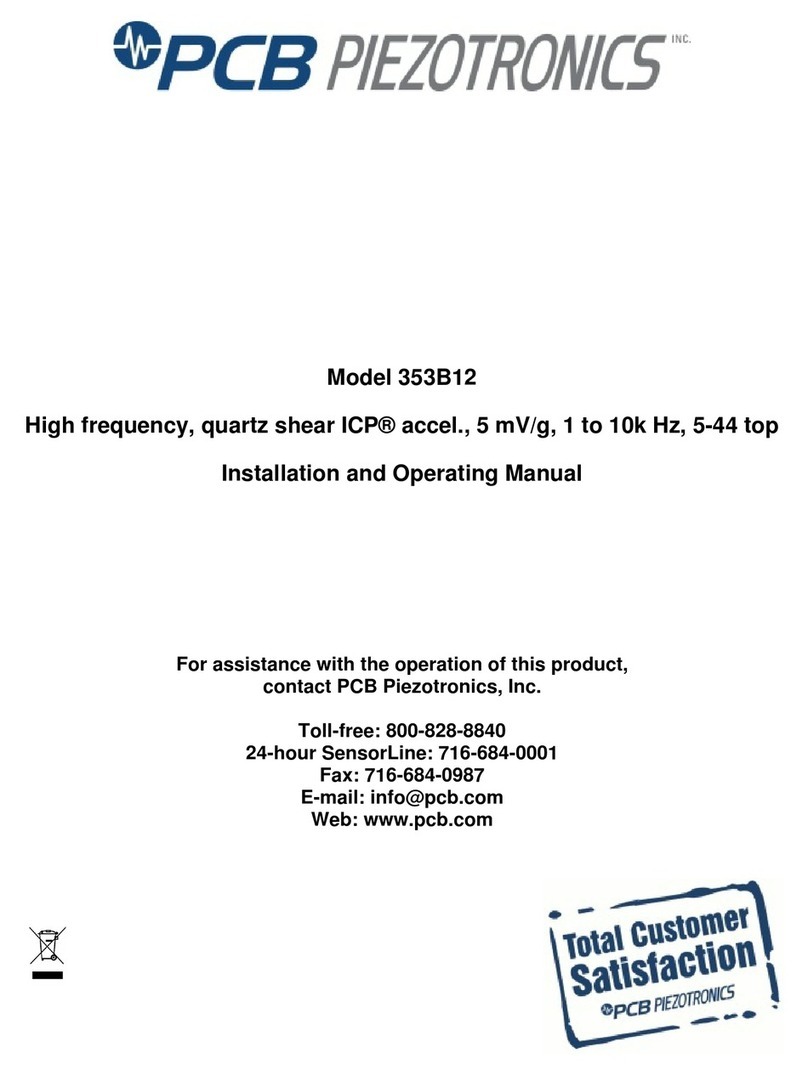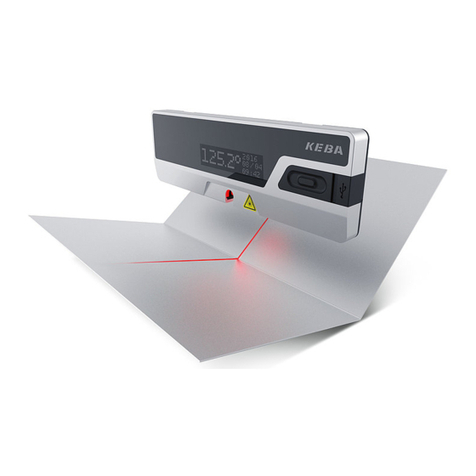
The NLSW45-3Ex is suitable for monitoring flows of gaseous media in zone1 + temperature class T3 (NLSW45-
3Ex) in conjunction with the airflow sensor F3Ex and 2 Z-barriers.
The F3Ex sensor can be used in zone 1 as defined in EN60079-14= VDE0165 part l1, section 3.21 as a "simple
electrical equipment". In this case, it does not require certification.
The NLSW45-3Ex control unit has to be installed and operated outside the explosion hazard area! The Z-barriers
are ATEX approved: TÜV 99 Atex 1449 X II (1/2) GD C [EEx ia/ib] IIC
The switching hysteresis is at a fixed setting. A break contact which can be adjusted from 2s to 60s is included
as standard. If the start for the bridging period is not activated, the break contact is activated when appliance is
switched on.
The onus is on the installing company and the equipment operator to ensure compliance with the relevant
national explosion hazard regulations. Avoid static charging of plastic and cable parts. Ensure that the
appliances are effectively protected from damage. The fixed installation and effective protection of sensor
cables against damage are essential.
One area of application is, for instance, to monitor the cooling of the motor in the direction of flow
behind the unit to be cooled. The exhausted air temperature in this area can rise to 80°C and above.
The standard switching delay is 0,2 s. A delay of up to 10 s is possible on request. The switching
hysteresis is at a fixed setting. A break contact which can be adjusted from 2 s to 60 s is included as
standard. If the start for the bridging period is not activated, the break contact is activated when
appliance is switched on. This appliance can monitor thin liquid media (up to 10 bar) in conjunction
with the F3Ex sensor at a temperature range of 0…+60 °C.
Examples of possible applications include:
- Monitoring of filling levels
- Detection of air bubbles in a closed system
- Detection of stoppages and movements greater than 1 cm/s
Technical data
Type NLSW45-3Ex NLSW45-3Ex
Article-number 77029/Ex 63377/Ex
Operating voltage 24V AC/DC 230V/AC
Voltage tolerance ± 5% ± 6%
Over voltage category II II
Signal lamp, voltage Green LED Green LED
Power consumption 4VA 4VA
Ambient temperature -20..+60°C -20..+60°C
Switching output Relay, 1 change-over contact Relay, 1 change-over contact
Relay output 250VAC, 10A, 2.5kVA 250VAC, 10A, 2.5kVA
Airflow monitoring Relay energised when airflow
is present Relay energised when airflow
is present
Signal lamp, airflow Yellow LED Yellow LED
Start up delay Adjustable approx 5 - 60 s Adjustable approx 5 - 60 s.
Signal lamp, start up delay - -
Media temperature range -20..+120°C -20..+120°C
Adjustment of the switching point With potentiometer With potentiometer
Airflow range 0,1-20 m/s 0,1-20 m/s
Measuring probes F3Ex, F3.2Ex F3Ex,F3.2Ex
Electrical connection 10 Terminals, 2.5 mm² 10 Terminals, 2,5 mm²
Type of protection, housing IP40 IP40
Type of protection, terminals IP20 IP20
Contamination class 2 2
Dimensions L=120mm; B=45mm; H=73mm L=120mm; B=45mm; H=73mm
Certification symbols CE , TüV CE, TüV
Measuring principal
A temperature-sensitive resistor is heated according to the calorimetric measuring principle. The
temperature-sensitive resistor is heated by a second resistor. A flow in the medium dissipates heat from the
measuring resistor, causing the resistor temperature an impedance to change. This temperature change is
evaluated. Since both the velocity and the temperature of the flowing medium affect the dissipated heat, a
relationship must be created between flow an temperature. For his purpose, a second temperature-
dependent measuring resistor is located next to the first one. The second measuring resistor (temperature
compensation) is not heated and is only used for the temperature measurement.
Airflow > / = switch point Switching output is energised Yellow LED "Airflow" switch on
Airflow < switch point Switching output is not energised Yellow LED "Airflow" switch off
Installation Instruction F3-Ex
To avoid measurement errors, please bear the following points in mind when selecting the measurement location:
•The length of cable between the sensor and monitoring appliance should not be more than 100m. If the
sensor cable is laid in a conduit with other live cables (e. g. for monitors or solenoid valves), we
recommend the shielding of the sensor cable. The sensor must be connected with the evaluation unit
corresponding to the connection diagram. Incorrect connection leads to faulty operation.
•The sensor should be mounted in such a way that the air flow passes through the lateral opening. The
marking is intended as an assembly aid.
•Install the F3-Ex where is low turbulence, if possible.
•Do not install directly behind bends (distance approx 10 x bend radius).
•Install the probe in the middle of the duct (distance at least 1/3 of the duct diameter from the wall).
•Do not install directly behind the heating register (rapid changes in temperature may lead to the measured
values being falsified).
Cleaning
The airflow sensor contains a sensor element which is sensitivity to mechanical loading and which must not be touched
with hard and pointed objects. Any cleaning that may be necessary is possible in water (also with addition of detergents).
Let the unit drip off and dry renewed start-up.
Attention!!
Connection and commissioning must be performed by properly authorized and qualified personnel!
Connection to mains supply (L, N) must be made by means of a protected isolating switch with the usual
fuses. As a matter of principle, the General VDE Regulations must be complied with (VDE 0100, VDE 0113,
VDE 0160). If the potential-free contact is connected to an extra-low safety voltage, sufficient insulation
must be provided for the connecting cables up to the terminal, since otherwise the double insulation to
the mains voltage side may be impaired. The current load capacity of the potential-free contact is limited
to 10 A. Therefore, the electrical circuit of the potential-free contact must be protected by a 10.3 A fuse.






